10 Tech Discoveries From ACE15
By Kevin Westerling,
@KevinOnWater
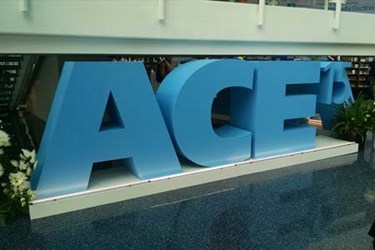
The Annual Conference & Exposition (ACE), hosted by the American Water Works Association (AWWA), is always an exciting event, but ACE15 had a very “dry” feel compared to years past. If you haven’t seen through the pun already, it wasn’t’ because the show lacked excitement (it didn’t), but because it was held in drought-ridden Anaheim, CA. The epic, statewide drought was the recurring topic of conversation, especially for companies there to showcase water-saving products — and rightly so, as the situation necessitates both vigilant awareness (i.e., conservation) and technology solutions.
Although drought was a particularly dominant theme this year, ACE15 offered much more; as per usual, the entire potable water industry was covered. The event annually draws in excess of 10,000 attendees from around the world (this year no exception) with problems as varied as the water systems they represent: differing source waters, infrastructure conditions, regulatory requirements, budgets, and workforces. Lucky for them, there were more than 500 exhibitors on hand at the Anaheim Convention Center with potential answers.
Among the many, here are 10 products I found to have particular potential.
EGRP System
While this list isn’t a ranking, Parjana’s EGRP, or Energy-passive Groundwater Recharge Product, was a surefire favorite discovery because of its truly innovative nature. Though the product looks simple — essentially a plastic tube that gets hammered into the ground — its unique five-chamber shape promotes fast stormwater infiltration, thereby reducing runoff and bolstering groundwater supply. The tubes, in lengths of 5, 10, 20, or 40 feet, are assembled in strategic patterns to maximize effect and efficiency. The simple form betrays the engineering genius behind the design, which the inventor (and managing partner), Andrew Niemczyk, describes thusly: “Think of a human heart … always open but flexing to pump. The EGRP works just like a heart, flexing with the pressure and energy of the soil as the earth expands and contracts.”
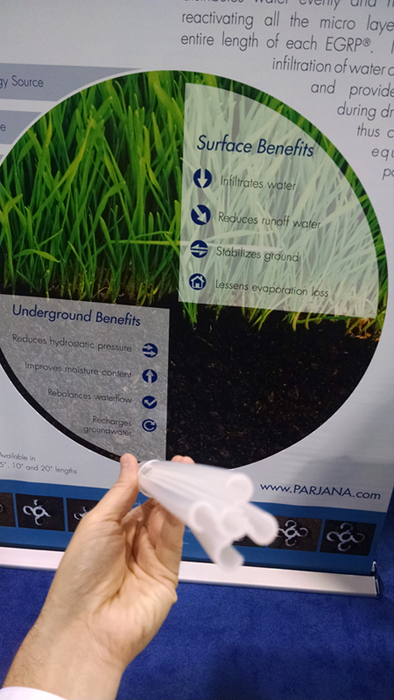
biottta Packaged Biotreatment Plants
Often at industry tradeshows you’ll hear the word “collaboration”; in fact, it was one of the essential “three Cs” mentioned by AWWA CEO David LaFrance during the Opening General Session (the others being communication and certification). The teaming of AdEdge and Carollo Engineers in bringing biottta (biologically-tailored, two-stage treatment approach) to market exemplifies both collaboration and innovation, and perhaps signifies a growing trend. Billed as a low-cost nitrate removal technology, biottta is the result of 20 years of R&D, said Jess Brown, Carollo’s director of Carollo’s Research and Development Practice and chair of the AWWA Biological Drinking Water Treatment Committee, speaking at ACE15. Brown also divulged that the system, which utilizes naturally-occurring bacteria to treat nitrates, VOCs, iron, perchlorate, and other contaminants in groundwater, was in midst of breaking ground on its first municipal drinking water installation in Delano, CA. The project will undergo stages of practice and certainty before the water gets distributed to the public, but the state has already shown confidence by designating biottta a “best available technology,” according to AdEdge’s president, Rich Cavagnaro. Learn more about biottta here and here.
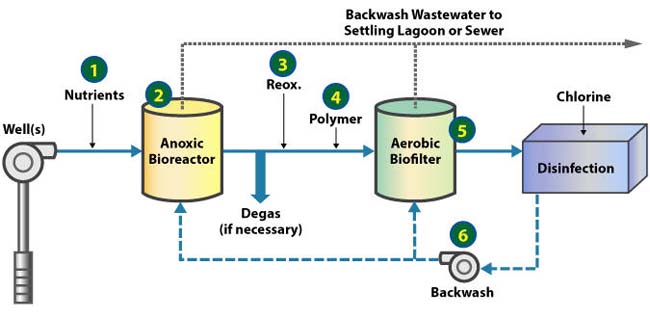
Smart Gateway
As mentioned in the intro, the companies that help utilities conserve water were most front-and-center for this particular show, due to the emphasis on the drought and water scarcity. That means lots of advanced metering infrastructure (AMI) talk and technology, with each AMI company looking for an edge that differentiates their system from competitors. Sensus’ new offering is the Smart Gateway solution — scalable, battery-powered devices, used in conjunction with AMI, that can monitor distribution lines, pump stations, vaults, and pressure gauges. The units can save on operating costs by replacing on-site system check-ups (i.e., “rolling a truck”) with remote data collection, transmitted at scheduled intervals or on-demand, plus security alerts. By monitoring water pressure remotely, even in (and especially for) hard-to-reach places, utilities can better manage situations such as leaks, possible theft/tampering, and faulty or failed equipment.
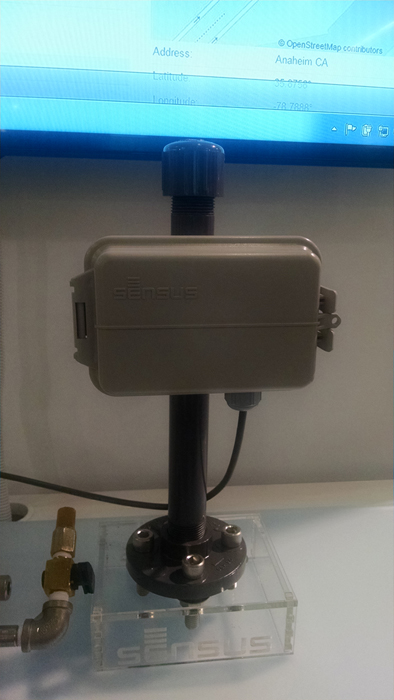
AMERICAN Earthquake Joint System Base
American Cast Iron Pipe Company
Another technology of significance to local audiences at ACE15 in Anaheim was the AMERICAN Earthquake Joint System Base, which can be paired with the American-Darling B-84-B-5 fire hydrant lead for a complete, resilient system (as shown below). The new offering is based off the company’s popular Flex-Ring joint and comes preassembled, so installation is familiar. The difference is in the deflection — 8 degrees of joint deflection as well as 2.4” of longitudinal expansion and contraction when assembled at the mid-point position (4.8” total length differential when fully contracted or fully extended). The extra “wiggle room” is enabled by an extended socket built into the ductile iron casting, allowing the pipe to move up and down and side to side during seismic events. Ductile iron has long been celebrated for sheer strength; now it’s strong and flexible.
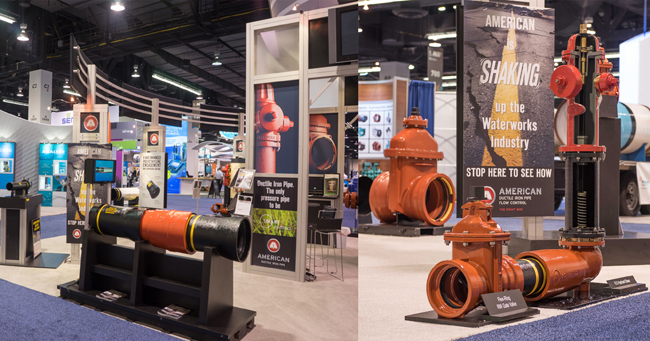
760 High-Performance Polymer Concrete (HPPC)
While earthquakes inflict damage in an instant, corrosion is a more insidious, widespread destroyer of infrastructure. Raven Lining Systems protect pipes, tunnels, tanks, clarifiers, etc. — whatever needs protecting, whether for potable water or wastewater – with a series of linings and coatings. The newest is Raven 760 HPPC, designed specifically for concrete and masonry. The polymer concrete can be sprayed on up to 1/4” thick per application (repeat as necessary) to rehabilitate old structures and systems. The 760 series can stand alone or act as underlayment for a polymer topcoat; the three-hour set time (with 14-day recoating window) is one of its distinguishing characteristics. Other noted benefits include simple application via trowel or spray system, minimum rebound, and epoxy-fortified bonding strength. If you can’t rebuild it, rehab it.
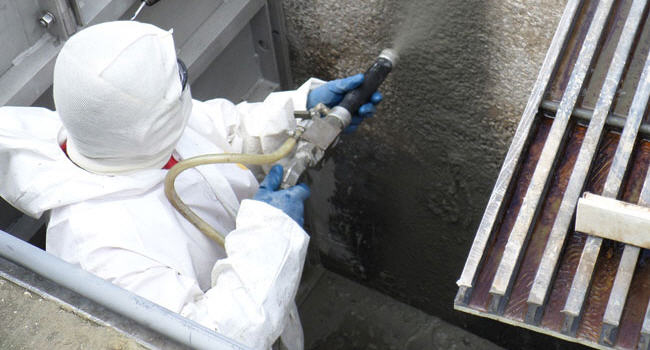
DemandLogic
When utilities crunch the numbers and analyze methods to stretch dollars farther, they often turn first to energy optimization. Each component and system is important in this regard, but SolarCity provides an opportunity for wholesale, whole-plant energy savings. As a bonus, utilities can move to clean, green, renewable energy. The solution is DemandLogic, and it works like this: solar power is harnessed throughout daylight hours to run plant operations and reduce energy spend from the grid; in the evening, leftover solar power is intelligently distributed to reduce peak-demand charges; at night, necessary grid power is purchased at off-peak rates. SolarCity offers the system at no upfront cost to the utility, but rather through 10- or 20-year financing options that are backed by a performance guarantee. DemandLogic batteries, which utilize storage technology developed by Tesla Motors, can also offer security in emergency situations by providing backup power that is independent from the grid.
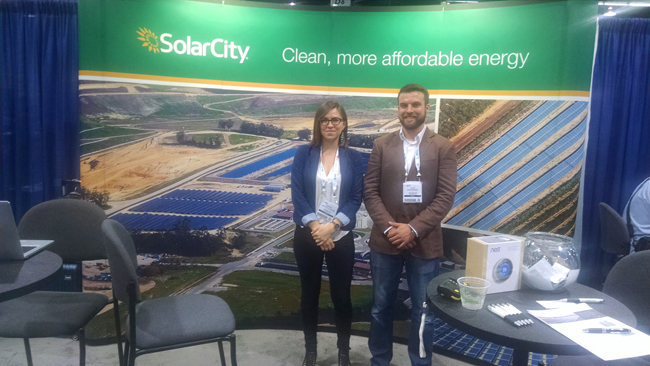
Liquiphant FTL31/FTL33 Liquid Level Switches
If you attended ACE15 (or happened upon my interview with David LaFrance), you may know that AWWA has adopted “Total Water Solutions” as a calling card — addressing not just drinking water needs, but all water needs holistically. And while Endress+Hauser are always at ACE displaying their potable water instrumentation products, the company's new releases for this year were directed at the industrial market. The Liquiphant FTL31 and FTL33 liquid level switches are unique in that they use tuning fork technology to overcome process conditions that confound other sensors. The FTL31 is designed for streams common to the chemical and oil-and-gas industries, while the FTL33 targets the pharmaceutical and food-and-beverage industries. Conventional sensors often fail in these environments due to issues related to conductivity, buildup, foam, turbulence, flow conditions, or air bubbles. In the case of the FTL31 and FTL33, the switch point is determined by electronics that distinguish whether the tuning fork is vibrating in air or immersed in liquid within tanks, vessels, and/or pipes.
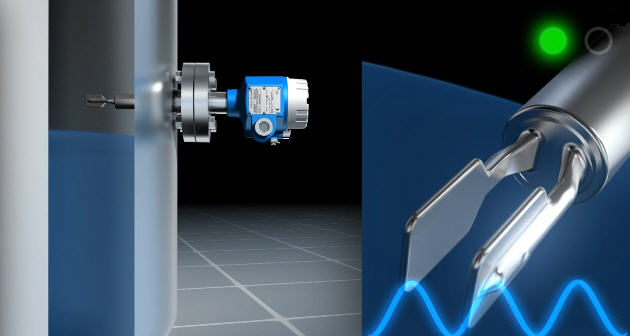
Waterflex Check Valve
Tideflex Technologies/Red Valve Company
Tideflex has made a name for itself with its “duck bill” check valve (seen below at right), curved at the discharge point to prevent backflow following effluent/stormwater discharge, but the company also offers innovation specifically engineered for potable water applications such as reservoir backflow. The Waterflex Check Valve follows Tideflex tradition in that it’s simple, smart, and practical (with idiosyncratic style, shown at left). The valve features an elastomer face that yields to forward hydraulic pressure, but seals flat against the perforated plate when reverse pressure (i.e., backflow) is applied. Available in sizes up to 96”, all Waterflex valves are lightweight relative to competing check valves, namely lever-and-weight or spring-loaded disks. Another advantage is that Waterflex has no moving parts that require maintenance or repairs, whereas hinges and springs can seize without lubrication and other routine maintenance. NSF-certified with a backpressure rating of 150 psi, Waterflex Check Valves strive for easy installation, easy maintenance, and cost-effectiveness. Check, check, and check.
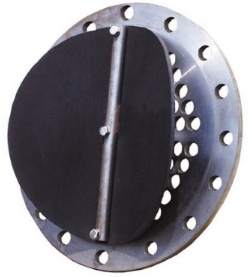
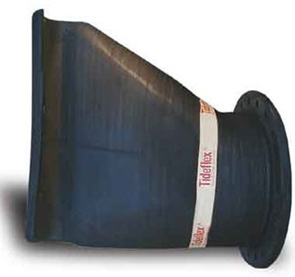
HYMAX VERSA
The HYMAX VERSA is more than meets the eye. It may appear pretty standard — or at least similar to previous Krausz couplings — but it’s brand new, and quite different. The major advance is VERSA’s (you may have guessed it) versatility in that it can be either stab-fitted or clamped on, allowing municipalities to maintain a lower inventory rather than stockpiling both styles separately. The couplings are constructed of stainless steel for durability and corrosion resistance, and offer 3 degrees of dynamic deflection on each side to prevent damage and cracking from ground shifts. In addition to mechanical sealing, the VERSA offers hydraulic sealing via patented gasket technology that self-inflates and tightens as water pressure increases. Suitable for both potable water and wastewater, the novel design not only fixes current breaks, whether shear or circular, it also reduces the risk of future leaks and breaks.
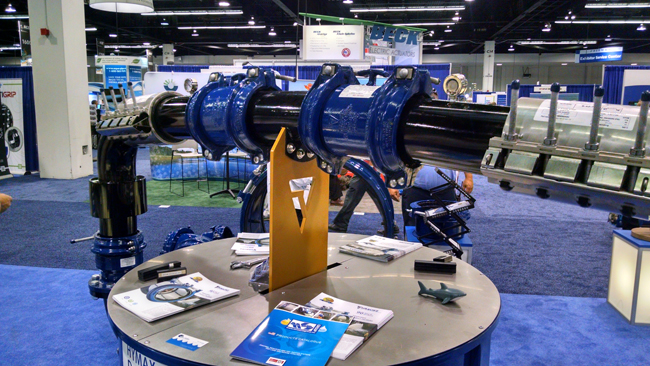
BEACON Advanced Metering Analytics (AMA)
To close, let’s talk about security. It’s a major concern for AMI companies and customers, and certainly a trending talking point as automation and remote/wireless communications become ever more prevalent. Badger Meter takes advantage of existing cellular infrastructure, rather than building a radio-frequency (RF) mesh network, to offer utilities flexibility and reduce capital costs. Data collected from meter endpoints is managed through Badger’s BEACON Advanced Metering Analytics (AMA) servers — the brains of the system — and hosted by Amazon Web Services. But for all the utility- and customer-side benefits, information security lurked as an issue. So Badger Meter retained Brier & Thorn, a managed security service provider and risk management firm, to perform 24/7 network monitoring as well as regular penetration testing, internal audits, and risk assessments. As a result, Badger announced (and here’s the discovery) that BEACON has achieved ISO 27001 certification verifying adherence to security management best practices and utilization of comprehensive security controls. The system also adheres to the SOC 2 (Service Organization Control) reporting framework and features AES256 (Advanced Encryption Standard) cryptography. And if you don’t understand all of that (you’re not alone), suffice it to say that the BEACON AMA network is about as secure as can be.

As this is just a glimpse and one-person perspective of the many technologies on display at ACE15, I welcome comments on these or any other interesting products and services that were discovered at the show. Feel free to weigh in below…
